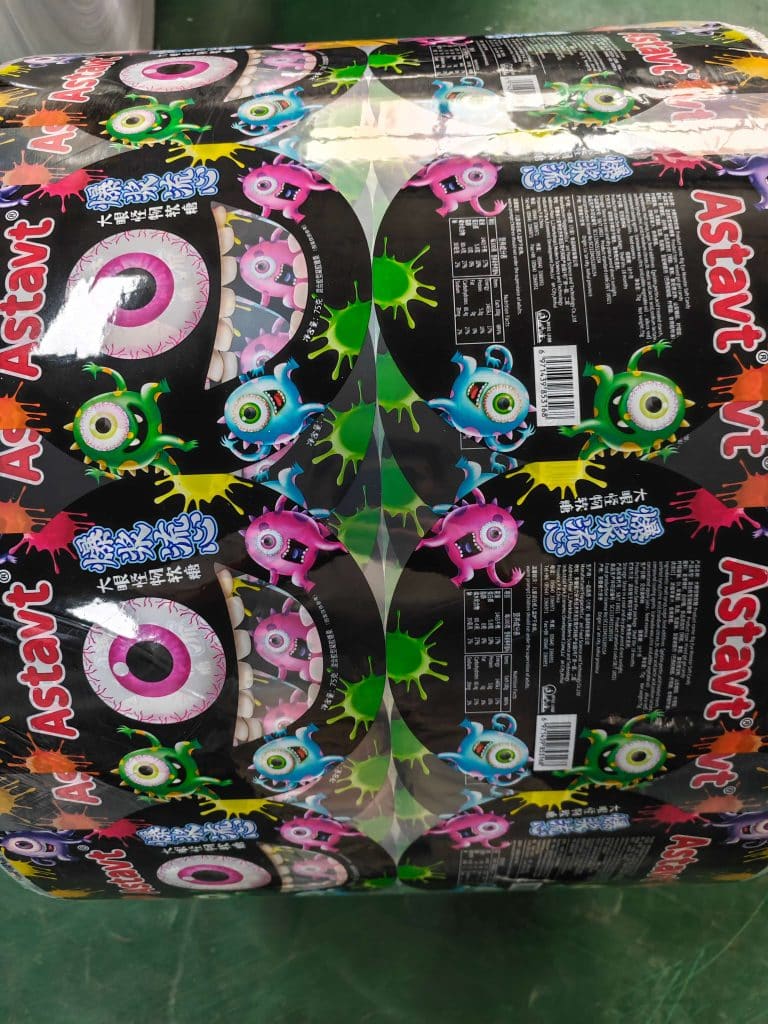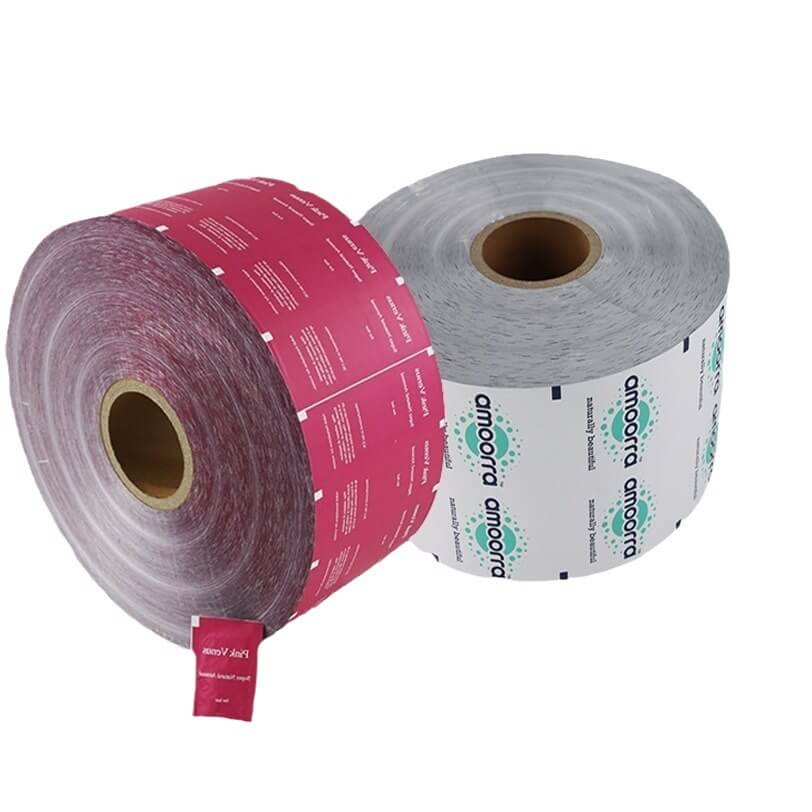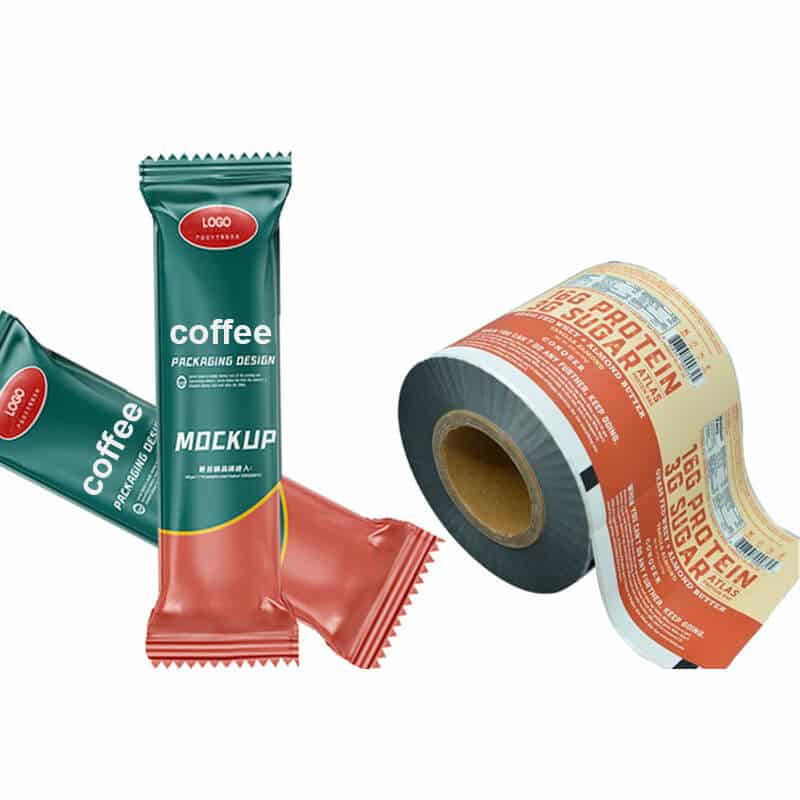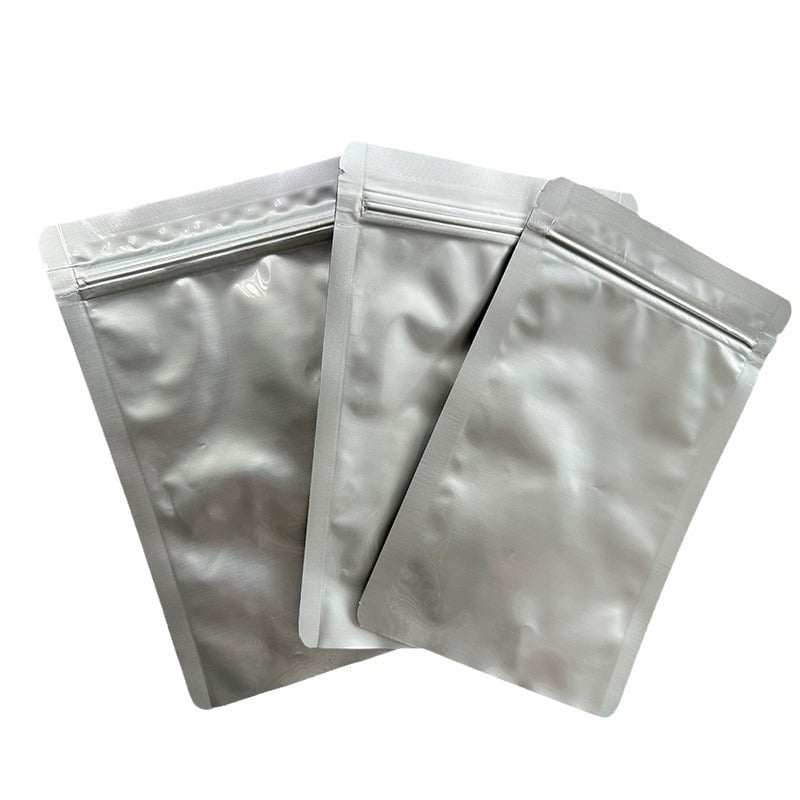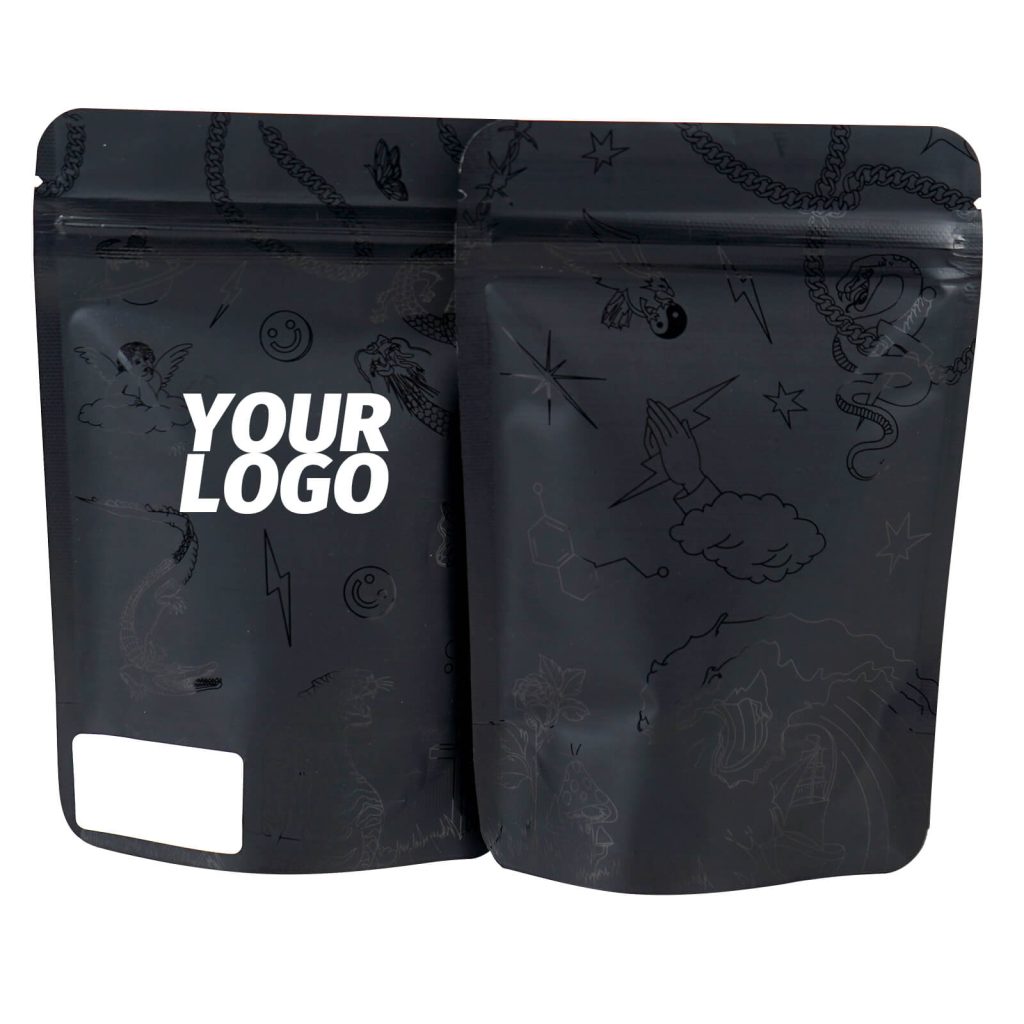What is flexible packaging?
Flexible packaging refers to packaging materials that can conform to the shape of the product they are containing. These materials are typically made from flexible films or sheets that can be easily bent, folded, or wrapped around a product.
Some common examples of flexible packaging include bags, pouches, envelopes, and sachets. These types of packaging are often used for food, personal care, and other consumer goods.
There are several advantages to using flexible packaging. One significant advantage is that flexible packaging materials often use less material than other types of packaging, making them more environmentally friendly. They also tend to be lighter and more compact, making them easier to transport and store. Flexible packaging materials are also typically easy to open and reseal, which makes them convenient for consumers.
In addition, flexible packaging materials can be printed using various printing technologies, including rotogravure, flexography, and digital printing. This allows for high-quality, full-color printing that can be used to display branding, product information, and other marketing messages.
Flexible packaging is famous for many companies due to its versatility, cost-effectiveness, and sustainability.
Benefits of Flexible Packaging
Flexible packaging refers to materials made from elastic or pliable substances, such as paper, plastic, foil, or fabric. These materials can be molded or shaped into various forms to fit a variety of products, making flexible packaging a versatile and convenient option for businesses. There are many benefits to using flexible packaging, which include the following:
1.Increased Product Protection
One of the main advantages of flexible packaging is its ability to protect products from external factors that can cause damage. Loose materials can cushion and support the development, preventing it from being crushed or damaged during transport. This can be especially beneficial for delicate items, such as fresh produce or baked goods, which may be easily bruised or broken when handled.
2. Reduced Weight and Volume:
Flexible packaging typically weighs less and takes up less space than traditional packaging materials, such as glass or metal. This can reduce shipping costs and make storing and transporting products easier. For example, a bag of chips packaged in a flexible bag will be lighter and take up less space than if packaged in a rigid box.
3. Increased Shelf Life:
Flexible packaging is often designed to keep products fresher for more extended periods. Many flexible packaging materials can block out light, oxygen, and other elements that can cause products to spoil or degrade. For example, a bag of coffee packaged in a foil pouch with a valve will be able to keep the coffee fresher for longer than if it were packaged in a paper bag.
4. Improved Convenience:
Flexible packaging is often more convenient for consumers to use than traditional packaging. For example, a bag of chips packaged in a loose bag can be easily resealed, allowing the consumer to save some chips for later without the risk of them going stale. Similarly, a pouch of baby food can be easily squeezed out and then reclosed, making it convenient for parents to feed their babies on the go.
5. Enhanced Marketing Opportunities:
Flexible packaging can also provide businesses with more opportunities to market their products. The surface area of flexible packaging is often much more significant than traditional packaging materials, providing more space for branding and product information. In addition, flexible packaging can be easily printed using various printing methods, allowing businesses to create eye-catching and attractive packaging designs.
6. Environmental Benefits:
Flexible packaging can also have environmental benefits. Many flexible packaging materials are made from recycled materials, which can help reduce the amount of waste in landfills. In addition, flexible packaging is often easier to recycle than traditional packaging materials, as it can be compacted and processed more efficiently.
In conclusion, flexible packaging offers several benefits for businesses and consumers alike. Its versatility, convenience, and ability to protect and preserve products make it a popular choice for many products.
Different Types of Flexible Packaging
Flexible packaging is a type of packaging that can be easily shaped and folded to fit the product it contains. It is made from various materials, including paper, plastic, and aluminum, and is often used for packaging food, pharmaceuticals, and other consumer goods. There are several different types of flexible packaging, each with its properties and benefits.
Stand up Pouches
Stand-up pouches are a type of flexible packaging that features a bottom gusset, which allows the pouch to stand upright on a store shelf. These pouches are typically made from a laminate of plastic, foil, and paper and are often used for packaging snacks, pet food, and other dry goods. The advantages of stand-up pouches include their ability to maintain the freshness of the product, take up less shelf space, and attract consumer attention with their excellent printability and unique shape.
Flat Pouches
Flat pouches are another type of flexible packaging that is often used for packaging food products. Unlike stand-up pouches, flat pouches do not have a gusset, which means they cannot stand upright on their own. They are usually made from a laminate of plastic, foil, and paper and are often used for packaging snacks, dried fruits, and other dry goods. The advantages of flat pouches include their ability to protect the product from light, moisture, and gas, and their cost-effectiveness, as flat pouches are usually cheaper than stand-up pouches.
Shrink Sleeves
Shrink sleeves are a type of flexible packaging that is made from a transparent plastic film that is heat-shrunk to fit around a product. These sleeves are often used for packaging beverages and other cylindrical products, providing a full 360-degree display of the product. The advantages of shrink sleeves include their ability to attract consumer attention with their high-quality printing, unique shape, and tamper-evident feature.
Roll Stock
Roll stock is a type of flexible packaging supplied on a roll in a continuous length. It is often made from a laminate of plastic, foil, and paper and is used for packaging a wide range of products, including food, medical supplies, and industrial goods. The advantages of roll stock include its versatility, as it can be easily cut and formed into various package shapes and sizes, as well as its cost-effectiveness, as it is typically less expensive to produce than pre-formed packages.
Wicketed Bags
Wicketed bags are a type of flexible packaging supplied on a wicket, a metal or plastic frame that holds the bags in place. These bags are often made from a laminate of plastic, foil, and paper and are used for packaging a wide range of products, including food, medical supplies, and industrial goods. The advantages of wicketed bags include their ease of use, as they can be easily dispensed one at a time, and their cost-effectiveness, as they are typically less expensive to produce than pre-formed packages.
What is the difference between Flexible packaging and Rigid packaging
Flexible and rigid packaging are two different types of packaging materials used for packaging a wide range of products. Each class has unique characteristics and advantages that make it well-suited for other products and applications. In this article, we will discuss the differences between flexible and rigid packaging in detail.
Flexible Packaging
Flexible packaging is a type of packaging that is made from flexible materials such as films, foils, and paper. These materials are lightweight, easy to form and shape, and can be easily folded or rolled. Some common examples of flexible packaging include bags, pouches, wraps, and sachets.
Flexible packaging is often used for irregularly shaped products, such as food products like snacks, candy, and powdered mixes. It can also be used for heavy or bulky products, making them difficult to package in traditional rigid packaging.
Advantages of flexible packaging:
- Lower cost
- Less weight and volume than rigid packaging can decrease transportation costs.
- Versatility in shape and design.
- Easy to open and reseal.
- Barrier properties can be enhanced to increase shelf life
- can be used for vacuum packing to remove oxygen from the inside, which can help to improve the shelf life of food products.
Disadvantages of flexible packaging:
- It may provide less protection for products than rigid packaging.
- Flexible packaging may be more susceptible to damage from impact or pressure and may need to hold up better in rough handling conditions.
- Rigid packaging
- Rigid packaging, on the other hand, is made from stiff and inflexible materials such as glass, metal, and plastic. These materials are more durable and provide better protection for products. Some common examples of rigid packaging include cans, bottles, jars, and tubs.
Rigid packaging is often used for heavy or dense products or requires high protection from impact or pressure. It is also well-suited for products that are intended for long-term storage, such as food and beverage products.
Advantages of rigid packaging:
- Provides better protection for products than flexible packaging.
- It can be stackable, which can save space.
- It can be used for carbonated drinks
- It can be more easily labeled and decorated
Disadvantages of rigid packaging:
- Higher cost
- Heavier and bulkier than flexible packaging, which can increase transportation costs
- Not as versatile in shape and design
- They are not easily compressible, which can make them less efficient to transport and store.
- In summary, flexible packaging is often the best choice for lightweight, irregularly shaped products or intended for short-term storage. In contrast, rigid packaging is better suited for heavy, dense, or long-term storage products. Both have their advantages and disadvantages, so the choice between flexible and inflexible packaging will depend on the product’s specific requirements and application.
What Industries Benefit From Flexible Packaging?
Flexible packaging refers to materials made from elastic or pliable substrates, such as plastics, films, and paper. These materials can be easily shaped, bent, or folded, making them ideal for a wide range of products and industries. Some of the initiatives that benefit from flexible packaging include:
Food and Beverage
The food and beverage industry is one of the largest and most apparent industries to benefit from flexible packaging. Flexible packaging materials are ideal for perishable packaging goods, such as fruits, vegetables, meat, and dairy products. The materials used in flexible packagings, such as polyethylene and polypropylene, have excellent barrier properties that help preserve the food’s freshness and prevent contamination. Additionally, flexible packaging materials are lightweight and take up less space than traditional packaging, making them more cost-effective and efficient to transport.
Personal Care and Cosmetics
Another industry that benefits from flexible packaging is personal care and cosmetics. Flexible packaging materials, such as laminated tubes, are ideal for packaging a wide range of unique care products, including toothpaste, shampoo, and lotions. The materials used in flexible packaging are also resistant to punctures and tears, which helps to ensure that the product is not damaged during transportation. Additionally, the form and shape flexibility of the packaging can help it stand out from competitors.
Pharmaceuticals
The pharmaceutical industry also benefits from flexible packaging materials. Flexible packaging materials are ideal for packaging a wide range of solid and semi-solid dosage forms, such as tablets and capsules. The materials used in flexible packaging, such as laminated aluminum foil and polyester, provide an excellent barrier against light, moisture, and oxygen, which helps preserve the drug’s potency and stability. Additionally, flexible packaging materials are also sterile and safe, which is essential in this industry.
Household and Industrial Chemicals
Household and industrial chemicals can also be packaged in flexible packaging. These materials often require unique packaging solutions that can withstand harsh chemicals and protect against leakage. Flexible packaging can be constructed from various materials, including polyethylene and polypropylene, which has excellent chemical resistance properties, making it an ideal solution for packaging industrial and household chemicals. Flexible packaging options for this industry can also come in various shapes and sizes to accommodate the products and make them easier to handle and use.
Pet Food
Flexible packaging is also an excellent option for pet food packaging. Pet food is often packaged in flexible pouches, made from multiple layers of plastic films, and vacuum sealed, which helps to preserve freshness and prevent spoilage. Additionally, flexible packaging is an excellent solution for packaging dry pet food, which can be difficult to package with traditional methods. Flexible packaging materials are also lightweight and easy to transport, making them a cost-effective solution for this industry.
Overall, flexible packaging offers many different industries a wide range of benefits. It is cost-effective, efficient, and customizable, making it an ideal solution for packaging a wide range of products. Additionally, flexible packaging materials also help preserve the product’s freshness and integrity, ensuring that it reaches the consumer in the best condition possible.
Why Use Flexible Packaging?
Flexible packaging, also known as flexible film packaging, is a type of packaging made from various materials, such as paper, aluminum, polyethylene, and polypropylene, that can be easily formed and shaped to fit the contours of a product. This type of packaging is becoming increasingly popular in various industries, including food, beverage, medical, and consumer products, due to its many advantages over traditional rigid packaging options.
Advantages of Flexible Packaging
Lightweight and Space-saving
One of the most significant advantages of flexible packaging is its lightweight and space-saving nature. Unlike traditional rigid packagings, such as glass or metal cans, flexible packaging is much lighter, making it easy to transport and store. This can lead to significant cost savings regarding shipping and storage costs. Additionally, because flexible packaging takes up less space than traditional rigid packaging, it can save valuable space on store shelves and in warehouses.
Cost-Effective
Flexible packaging is also generally more cost-effective than traditional rigid packaging. The materials used to create flexible packaging are typically less expensive than those used to make rigid packaging. The manufacturing and filling flexible packaging process is generally quicker and less labor-intensive. Additionally, because flexible packaging is lightweight and space-saving, it can reduce the costs associated with transportation and storage.
Durable and Resistant
Flexible packaging is also known for its durability and resistance to damage. Flexible packaging materials, such as polyethylene and polypropylene, are robust and tear-resistant, making them well-suited to withstand the rigors of transport and storage. Additionally, most flexible packaging is sealed tight to protect products from moisture, oxygen, and other external elements.
Versatile and Customizable
Another advantage of flexible packaging is its versatility and customization. Flexible packaging can be designed and printed in various ways to fit the specific needs of different products and target markets. The package can be designed to be re-sealable, stand up, lay down, shape and size, as well as include windows, zippers, and other features that make it more convenient for consumers to use. This can help increase brand recognition and customer loyalty.
Environmentally Friendly
Flexible packaging is also considered more environmentally friendly than traditional rigid packaging options. Many flexible packaging materials, such as polyethylene and polypropylene, are recyclable, and the lightweight nature of flexible packaging can reduce the environmental impact of transportation. Additionally, flexible packaging often requires less energy to produce than traditional rigid packaging options.
Conclusion
Flexible packaging is a cost-effective, lightweight, and versatile option quickly gaining popularity in various industries. Its durability, resistance to damage, and customizable nature make it an ideal choice for protecting and promoting a wide range of products. Additionally, its environmental-friendly property is a big plus for many companies who want to reduce their carbon footprint and go green.
How Do You Know If You’ve Chosen The Ideal Flexible Packaging?
Choosing the proper flexible packaging can be tricky, as there are a lot of factors to consider, such as the product being packaged, the intended use, and the desired shelf life. However, by keeping a few key points in mind, it is possible to select the ideal flexible packaging for your product.
1. Consider the Product Being Packaged
When choosing flexible packaging, it’s essential to consider the product’s characteristics. For example, suppose you are packaging a food product. In that case, you will need to consider factors such as moisture and air barrier properties and the ability to withstand high temperatures during pasteurization or sterilization. On the other hand, if you are packaging a non-food product, you may be more concerned with durability and tear resistance.
2. Consider the Intended Use
Another essential factor to consider when choosing flexible packaging is the product’s intended use. If the product is shipped or stored at different temperatures or environments, you must choose packaging that can withstand those conditions. Additionally, if the product will be sold in a retail setting, you will want to select eye-catching and easy-to-open packaging.
3.Consider the Desired Shelf Life
The desired shelf life of your product is also an essential factor to consider when choosing flexible packaging. Different packaging materials and designs have varying levels of barrier properties, which can affect the shelf life of your product. For example, a vacuum-sealed package will provide a longer shelf life than a package sealed with a heat sealer.
4.Consider the Product Volume
When choosing flexible packaging, you should also consider the product volume. Some packaging might be perfect for a small product but not for a significant effect. You should select the packaging that allows easy filling and emptying and select the right size and shape for your product.
5.Consider the Cost and environmental impact
When choosing flexible packaging, you will also want to consider the cost and environmental impact of the packaging. Some packaging materials and designs may be more expensive than others, so you must balance price and performance. Additionally, some packaging materials may have a more significant environmental impact than others, so it’s essential to consider the life-cycle assessment of different packaging materials.
6.Consider the Regulation and compliance
It would help if you considered the relevant regulations and compliance when choosing flexible packaging. Different regions or countries have different rules on packaging and labeling, and you must ensure your packaging complies with all relevant regulations. You should also consider any certifications required for your product and packaging, such as organic or non-GMO certifications.
By keeping these factors in mind, you can select the ideal flexible packaging for your product and ensure that it will be well-protected, easy to use, and visually appealing. Of course, It’s also essential to work with a packaging expert to ensure that your package meets your expectations and regulations.

